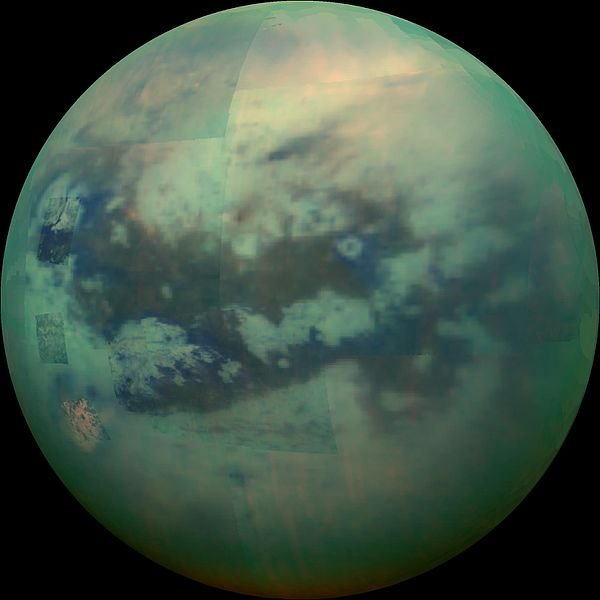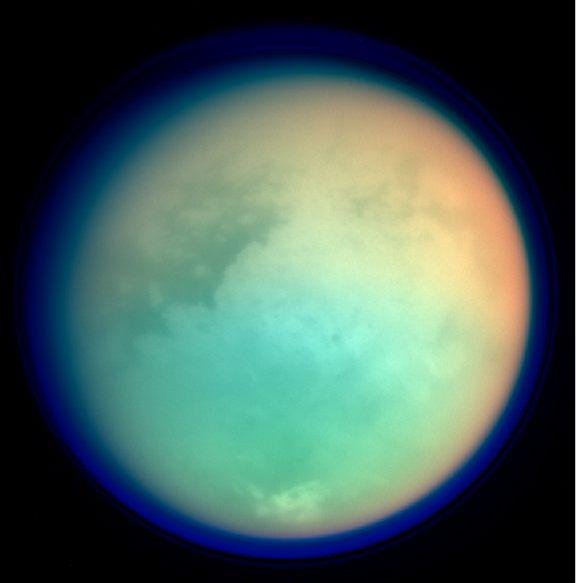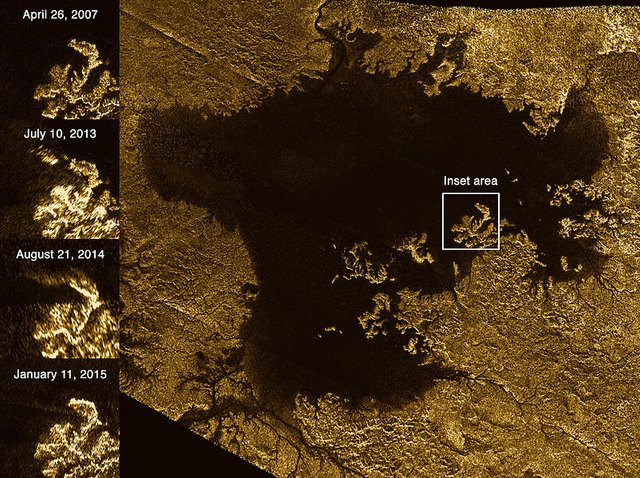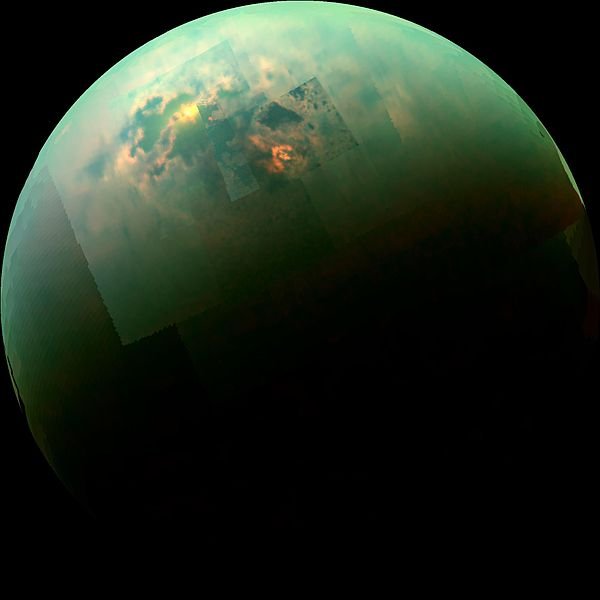Life, and the Mysterious Vanishing Island of Saturn’s Moon - Titan, Vol 2
I started a new 2 volume series about Saturn’s biggest moon, Titan, which is a fascinating moon with a lot of interesting attributes. In the previous post, we had a holistic look at the moon, where we briefly talked about the structure of the satellite, it’s methane cycles which is similar to Earth’s water cycle, on Titan, liquid methane on the surface of the moon, evaporates and forms thick clouds in the sky, which contributes to giving the moon a beautiful yellow haze, this doesn’t last for long as the methane suspended in the clouds falls back to the surface of Titan as rainfall similar to rainfall on Earth.
Today, we will be picking up from where we left off as we continue our exploration of this beautiful world. The NASA’s spacecraft, Cassini has done a great job by piecing together an elaborate map of the surface of this moon, which reveals several geographical features that share a striking resemblance with what one will find here on Earth. One of such examples is Xanadu, which is a raised area close to the equator with the relative size of Australia. Xanadu is covered with hills, Dunne, rivers and valley, and beside it lies the sunken land of Shangri-La, which is the darkest area of the moon’s surface. Initially, these areas were thought to be sea, but recent reports from Cassini suggests otherwise, these locations are currently dry and void of any liquid body.
Being an ET fan, I love reading about solar bodies that have the capacity to support life even if it is not in the nearest future. And being a conspiracy theorist, I believe we are not alone in the universe, as they’ve been several reports to suggest that there are other forms of intelligent life in the universe, and some of this aliens have been spotted here on Earth. It is without question that I had to explore the possibility of Titan having the possibility of harbouring life, even if it is at its infancy. I was really excited to find out that it has been looked into, and there is evidence that suggests that in the future, perhaps there could be a methane-based ecosystem on Titan since it is the most abundant resources found in this world.
The presence of some atmospheric and other physical characteristics have put Titan up there is a destination to look out for in the quest for an Alien life. Characteristics such as rivers, dense atmosphere, liquid lakes and several others. These attributes are very similar to what we have here on Earth, but the major difference is the chemical composition of both worlds as they are different. This can be translated as saying that the existence of Earth-like creatures, both on the micro and macro level will not be possible. But that doesn’t rule out the possibility of life on Titan all together, as Methane is to Titan, as water is to Earth, and this methane exists in all forms (gas, liquid and solid). And for this very reason, the hypothesis that a methane-based ecosystem can be said to be valid.
But as far as history goes, Titan’s present chemistry make up is very similar to that of prebiotic Earth, the only difference is the extreme cold temperatures Titan is known to have. Point is, Titan has a lot of the necessary instrument needed to support the evolution of life, as long as that life consumes hydrogen and not oxygen, and can thrive in a methane ecosystem and not water. Since there are no other confirmed life forms outside Earth to study, and so far scientist has found very little evidence to suggest why this may be impossible, this means that there is a decent possibility that life might one day materialize on Titan. Although the extremely cold temperatures of the moon might be the only stumbling block as it may stop the needed chemical reaction that will be required to create a life evolution. But as we may all know, the earliest life forms on Earth lived on a planet with no oxygen in its atmosphere in the beginning.
Personally, the glimmer of hope I see that as the Sun ages and enter the stages of its death, engulfing Venus and Mercury as it enters the closing stages of its death, that is 6 billion years from now; then all life forms on Earth will be long gone. And in the later years of the Sun as a red giant, this will enable Titan to become a little bit warmer. This heat may be enough to enable Titan to develop similar characteristics as Earth, and possibly creating life again in the Solar System, after the probable extinction of humanity.
In recent years there have been some anomalies that Cassini has picked up, these mysterious events are said to occur in the hydrocarbon seas of Titans. The “magic Island” as it is commonly called was spotted in the Ligeia Mare, which is the 2nd largest liquid body in Saturn’s moon. This sea is composed of liquid of ethane and methane, as well as nitrogen, and then what is the magic island really is? Researchers so far have come up with a hypothesis in a bid to explain the vanishing nature of the “magic Island” believe that the “magic island”. First, the blazing area of that can be called an island is believed to be thousands of bubbles rising from the depth of the sea. This may be as a result of some liquid material that must have been displaced from the seabed temporarily, which rises up to the sea surface, before sinking down again. NASA was quoted as saying that the seas on Titan are not stagnant, but has activities going on in them.
Another opinion theory as to what is causing the vanishing and reappearance of the “magical island” is the movement of waves moving slowly on the surface of Titan.
Researchers believe that these bubbles are created as a result of the mixture of ethane, nitrogen and methane which becomes unstable due to the presence of pressure and temperatures that are believed to exist in depth of Ligeia Mare. Titan, being the second largest moon in the Solar System, and is also larger than Mercury and Earth’s moon, this makes it a special satellite. Known as the only moon that possesses a dense atmosphere of methane and nitrogen, as well as a cloud. All this culminate to give the moon an orange fuzzy outlook. With atmospheric pressure 60 per cent greater than that of Earth.
Similar to Jupiter’s moon, Europa and yet another Saturn’s moon - Enceladus, Titan also could have subsurface ocean made of water like it’s counterparts. Still, on the premise of a subsurface ocean, Enceladus is known to have active plumes, and more recently, Europa has been revealed to also have active plumes; which indicates activities happening beneath its surface. While in the case of Titan, all we have are prospective cryovolcano located at the surface of the moon, which no conviction of their activities thus far. Due to the complex chemical nature of this moon, human life cannot be supported yet, who knows what the future holds.
References






This post has been voted on by the steemstem curation team and voting trail.
There is more to SteemSTEM than just writing posts, check here for some more tips on being a community member. You can also join our discord here to get to know the rest of the community!